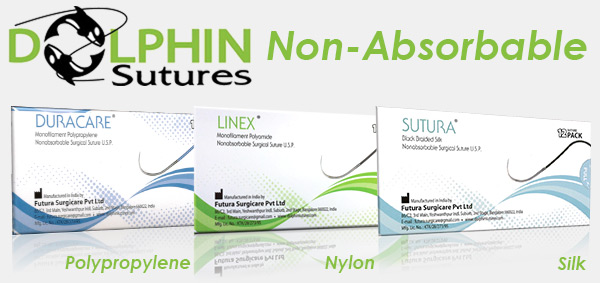Exposé Series - Non-Absorbable Sutures
|
When a suture is called on for longer periods of healing, to precisely stabilise flap edges, or for closing cases of periodontal and ridge augmentation, then the best suture may be non-absorbable. Residents and faculty members of the Harvard School of Dental Medicine favoured non-absorbable sutures for exactly these indications (Maksoud et al, 2014). There are a number of other reasons to reach for it too, from signs of infection, to simply wanting to make sure of the recall. Whatever the reason to choose non-absorbable, Ostralos has a range of silk, nylon and polypropylene sutures that are optimised for oral surgery. |
||||||||||||||||||||||||||||||||||||||||
|
Which knot? It has been shown that different knot configurations suit particular suture materials better than others, according to a new study published in Polymers by Abellan et al. (April 2016). It included two suture materials available from Ostralos, silk and polyamide (nylon). As the knot is the weakest part of any suture, it deserved a closer look. Five different suture materials using three different knot configurations were tested mechanically and physically in vitro. The mechanical method involved a Quasar 5 Universal Testing Machine to separate the sutures at an established mandible speed. The physical method exposed sutures to either pH conditions, ranging from pH 4 to 9, or thermal cycle fluctuations to simulate oral conditions. The total sample size amounted to 1350 specimens. The knots employed are as follows. Knot A - three-throw forward, one forward and one reverse Knot B - two-throw forward, one reverse and one forward Knot C - one-throw forward, two forward and one reverse The following graphs show the knot configurations failure load for silk and polyamide (Abellan et al, 2016).
Silk performed best when knot configuration B was used, and worst with knot C. Contrary to silk, polyamide exhibited its highest values when tied with knot C, and performed better than silk. In summary, when using silk sutures, a two-throw forward, one reverse and one forward technique is recommended. When nylon sutures are placed, a one-throw forward, two forward and one reverse would be the most suitable configuration to maintain primary closure. |
||||||||||||||||||||||||||||||||||||||||
|
What about bacteria? Common suture materials have been put to the test by Masini et al. (2011) with both unsurprising and surprising results. This in-vitro study evaluated bacterial adherence to poliglecaprone, polypropylene, silk, PGA and antimicrobial PGA suture. A bacterial immersion, formation, irrigation and imaging method was used to reveal a total photon count that correlated with the residual viable bacteria on each material. Unsurprisingly, the braided PGA suture fared the worst of all the materials included in the study. Masini cautions the use of the antimicrobially treated PGA suture as well, stating "it is at risk for reverting to the properties of its untreated counterpart over time". Silk and poliglecaprone both had low counts, but the best performer, with the lowest mean photon count of all materials, was in fact the polypropylene suture. |
||||||||||||||||||||||||||||||||||||||||
|
Where to cut? 3mm is the end length presented by Muffly et al. (2010) as being long enough to avoid knot slippage. Though Muffly states that there isn't an established consensus. When to remove? The timeframe in which to remove non-absorbable sutures varies greatly, but commonly chosen times for implant surgery are 7 days for a simple closure, or 10 days if a flap was advanced. |
||||||||||||||||||||||||||||||||||||||||
|
Range?
References Abellán, D., Nart, J., Pascual, A., Cohen, R. E., & Sanz-Moliner, J. D. Physical and Mechanical Evaluation of Five Suture Materials on Three Knot Configurations: An in Vitro Study. Polymers (20734360). April 2016;8(4), 1. Maksoud M, Koo S, Barouch K, Karimbux N. Popularity of suture materials among residents and faculty members of a postdoctoral periodontology program. Journal Of Investigative And Clinical Dentistry. February 2014;5(1):45-50. Masini, B. D., Stinner, D. J., Waterman, S. M., & Wenke, J. C. (2011). Original report: Bacterial Adherence to Suture Materials. Journal Of Surgical Education, 68101-104. doi:10.1016/j.jsurg.2010.09.015 Muffly, T.M.; Cook, C.; Distasio, J.; Bonham, A.J.; Blandon, R.E. Suture end length as a function of knot integrity. J. Surg. Educ. 2009, 66, 276–280. |


